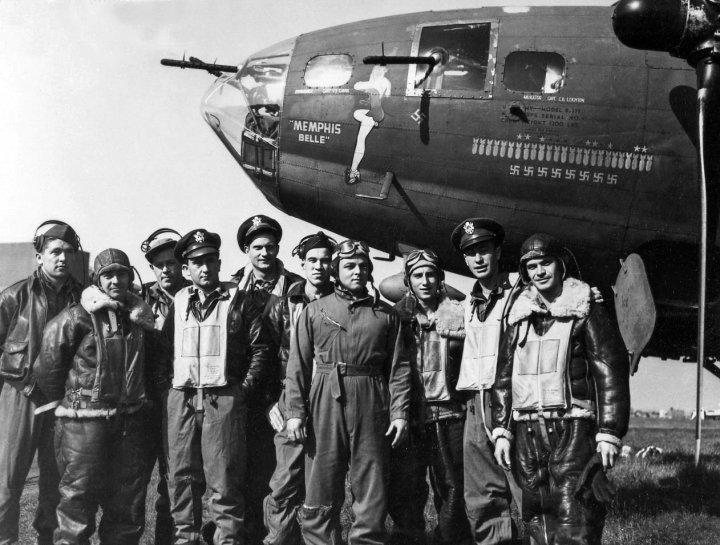Charles Leighton and the Memphis Belle

Step back in an OWU history classroom for a mini-class with Professor Michael Flamm.


Eighty years ago, in May 1943, the Memphis Belle returned safely from a bombing raid against a German submarine base and became one of the first B-17s in the Army Air Force to complete 25 missions over Europe. It was no small feat—the three-month survival rate for bomber crews at the time was less than 20 percent due to German fighter planes and antiaircraft fire.
The navigator of the Memphis Belle was Charles Leighton, a chemistry major and football player at Ohio Wesleyan. On November 28, 1941, the senior tailback played his final game. Nine days later, Japan attacked Pearl Harbor, and the United States went to war. In January 1942, Leighton enlisted— graduation would have to wait. "My chemistry professor was more intimidating than Hitler," he later said modestly.
Despite suffering from chronic airsickness, Leighton constantly checked and rechecked his maps and charts to ensure that the plane made it to the target and back to base. He also operated a machine gun and battled frostbite. The B-17s were unpressurized and unheated—at 25,000 feet, it was like being on the summit of Mt. Everest, with temperatures routinely 20 degrees below zero or colder.
"If that sounds like nothing more than the minimum job description," recalled the captain of the Memphis Belle, "try factoring in these elements: a sky filled with black smoke from bursting flak and whizzing aircraft both enemy and friendly, fierce blasts of wind and weather, false navigational beams being thrown up by the Germans on the ground, voices screaming through your headset phones, and the superhuman need to keep concentrating … after seven to eight hours of trauma-filled flying time."
Leighton accepted the pressure: "When you are the lead navigator, the whole formation depends on you. The responsibility is frightening." He also acknowledged the fear: "You get scared sometimes, but usually any feeling of fright or tenseness leaves you when you start mixing it up." Always calm under pressure, he and the crew then returned to America in mid-1943 to participate in a War Bond promotional tour.
The 1944 release of The Memphis Belle, a powerful documentary produced by Hollywood director William Wyler, made Leighton and his crewmates famous. (Watch the film on the Library of Congress website or Netflix.) But the humble navigator rarely spoke of his military service. Although he accepted his celebrity as part of his life, he would not dwell on it.
In 1945, Leighton married his childhood sweetheart, Jane Francis, received an honorable discharge, and returned to his home in East Lansing, Michigan. There he started a family and finished his degree at Michigan State University, which is why he never received his OWU diploma—until 2023, when President Rock Jones presented it to two of Leighton's grandchildren as part of the annual Vogel Lecture. (Watch the ceremony on the Stream OWU website.)
Leighton spent his career in various Michigan public schools as a teacher and counselor. He died in 1991, survived by his beloved wife, two daughters, and four grandchildren.
"He was a real peacemaker, a very special caring person … who did not have an enemy," said colleague Tom Nelson. "He was a very modest person who was very proud of his role in World War II—but at the same time slightly embarrassed by the publicity."
As the United States once again faces serious threats in Europe and Asia, the OWU community should feel a sense of pride in Leighton's example. We also owe a debt of gratitude to all who have chosen to defend freedom and democracy, which are now at risk abroad and at home.
